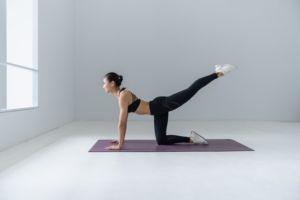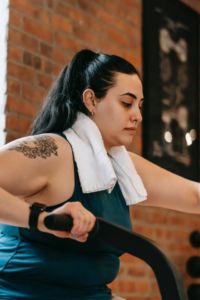Are you looking for a way to reduce your stress and get your energy back after being housebound all winter? We could all use a health reset this spring. Here are five ways you can improve your mental and physical health for 2021:

1. Get Outdoors
You’ve probably spent a lot of time taking walks or hanging out in your yard, weather permitting, during the pandemic. In many places, outdoor attractions like popular hiking trails or national parks were closed for at least part of last year. Now most parks and wild areas here in Tennessee and other scenic places in the U.S are open to the public. There’s something about forests, rivers, and lakes that refreshes both mind and body. If you feel tired and don’t know if it’s physical or emotional, try escaping to one of these wild places and see if nature can re-energize you.
Hiking can provide a robust workout, and doing it regularly has been shown to improve blood sugar, blood pressure, and strengthen core muscles. It’s also proven to reduce stress and anxiety, and boost mood.
New hikers or people who haven’t been active for a while should start with short, more leisurely hikes. Remember that the hike’s total distance is double the one-way distance that is posted on the sign. Using hiking poles to propel your body forward can increase the cardio workout. They can also help with balance on rougher terrain. Even an easy board-walk style hike can get you moving and help you feel better physically and mentally. So get outside and enjoy our scenic places.

2. Stretch Out
Stretching is an often overlooked part of physical fitness. Flexibility is one of three fitness metrics, along with cardio endurance, and muscle strength. All of these metrics are important for a healthy, fit body. Without stretching, muscles shorten and become tight. Short, tight muscles lose range of motion and are prone to injury. Stretching on a regular basis encourages longer muscles that are ready to move. People who sit for long hours tend to have tight hamstrings (in the back of the thigh). Hamstrings, hip flexors (pelvis), calves, and quadriceps (front of thigh), are the muscle groups that are most important for mobility. Stretching these areas daily can help you move easier and avoid injury. It’s also beneficial to stretch your lower back, neck, and shoulders.
Stretching not only improves flexibility it also helps you de-stress. We hold tension in our muscles. A good stretching routine can help us release that tension and make you feel more at ease. There are many effective stretching routines that you can find online or learn from a fitness trainer or chiropractor, but yoga can be especially beneficial for stress. Look for “gentle” routines that focus on relaxing poses. The combination of controlled breathing and yoga stretches can lower stress levels and improve flexibility.
It’s important to stretch properly. Don’t hold a static stretch for longer than sixty seconds (15-20 seconds is recommended). Don’t bounce or overextend your joints. Stretch after you have done something active like a warm-up or a walk. Warm muscles stretch better and are less prone to injury. If you feel pain while stretching, stop and consult your doctor.

3. Get an Adjustment
Whether you are hunching in your office chair or hitting the gym, your spine might need a tune up. Your spine houses your spinal cord– the hub of your nervous system. Vertebrae that are out of alignment hinder your nervous system, and this has a domino effect on other body systems, including immunity. Seeing a chiropractor can improve back and neck pain, and free your nervous system to work optimally.
Your chiropractor can also give you tips on how to exercise safely, and treat old injuries that are holding you back. At Stanlick Chiropractic, we offer laser therapy, spinal decompression, and massage to treat a full range of orthopedic and soft tissue injuries. Chiropractic care is especially important for people who are transitioning from being sedentary to being more active. Keeping your spine in line as your body changes will help you feel your best so you can keep pursuing your fitness goals.

4. Start a New Workout Routine
Speaking of fitness goals, spring is the perfect time to start a new workout routine. You can do this no matter what your fitness level is. If you’ve been on the couch too much this past year, then start out slow. A walk or a short workout a few times a week will help to ease your body back into being active. Avoid injury by always warming up for at least five minutes before you work out. You can find good warm-up routines online or consult a fitness trainer. Stretch after you warm up. Then get exercising.
A good workout will leave you feeling like you pushed yourself, but not to exhaustion. Some people find it helpful to pick one metric to focus on when they are starting to work out again. You could start with improving your cardio and do HIIT workouts, running, or cycling. If that’s not your thing, you could focus on strength training routines. Make it a goal to eventually incorporate cardio, strength training, and flexibility-focused exercises into your week.
A regular workout routine may make you feel tired at first, but after a few weeks, you will notice your energy rising and your stress levels dropping. Most people see noticeable improvements in muscle tone or cardio endurance a few weeks after starting a workout program. People with high blood pressure will notice better numbers in one to three months. Don’t stress if you have a week where you don’t get to all your workouts. Just start fresh the next week and keep moving forward.

5. Freshen Up Your Diet
Leafy greens and other good-for-you produce are in season now. It’s a great time to make a healthy salad or dig out your vegetarian cookbook for Meatless Mondays. If you hate kale, don’t worry, Bok choy, spinach, and other dark green veggies pack the same nutritional punch. Try to eat all different colors of vegetables and fruits. Berries are full of antioxidants and fiber and low in sugar. They make a great addition to breakfast or an after-workout shake. Get creative and see how many ways you can sneak plant-based foods into your diet. You may be surprised by how delicious vegetables can be.
Eating a diet high in plant-based foods and low in saturated fats and red meat is associated with a decreased risk for heart disease, cancer, and obesity. You can start adding more veggies to your meals today to improve your health tomorrow.

